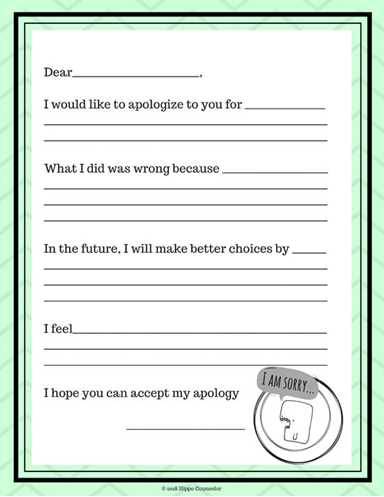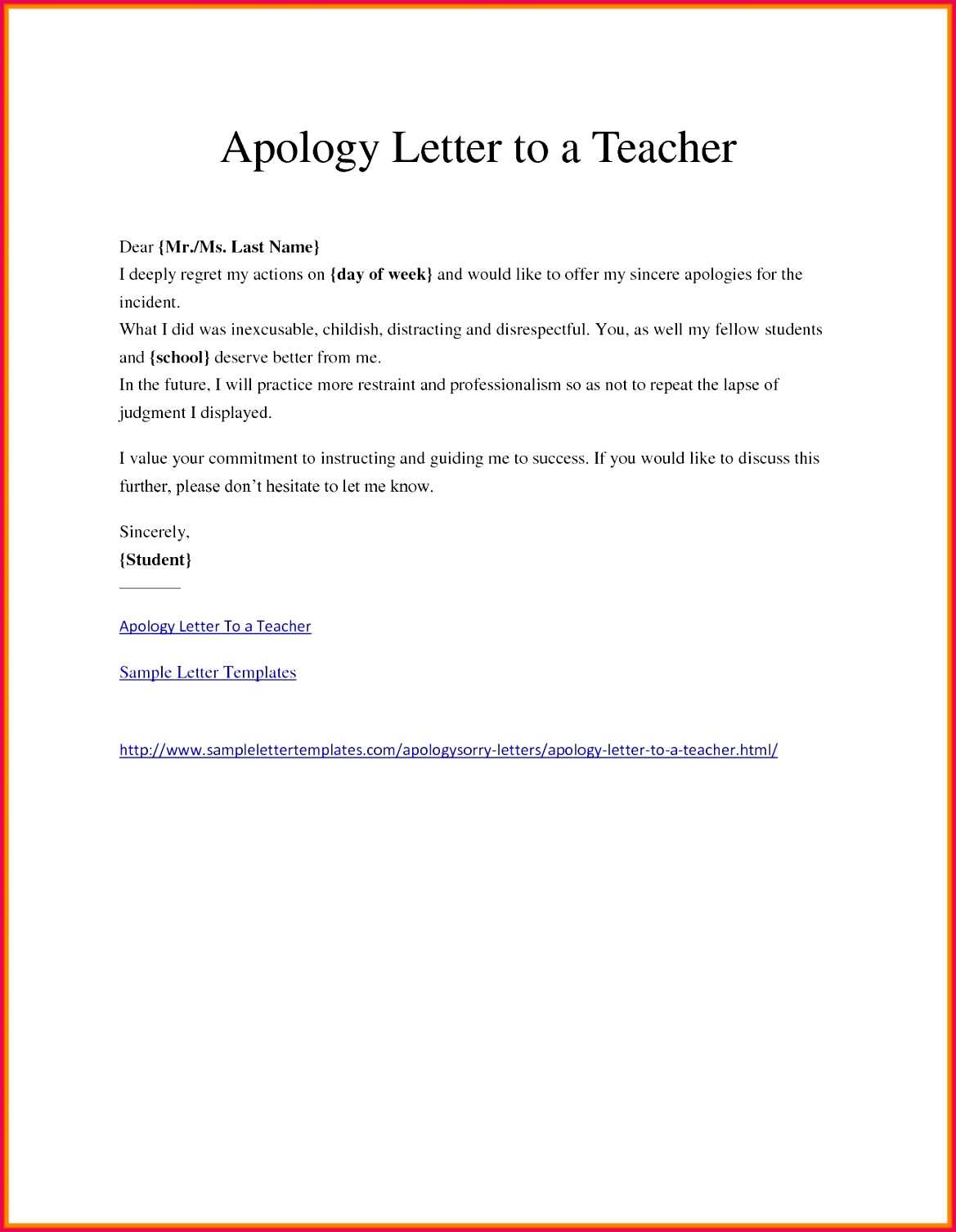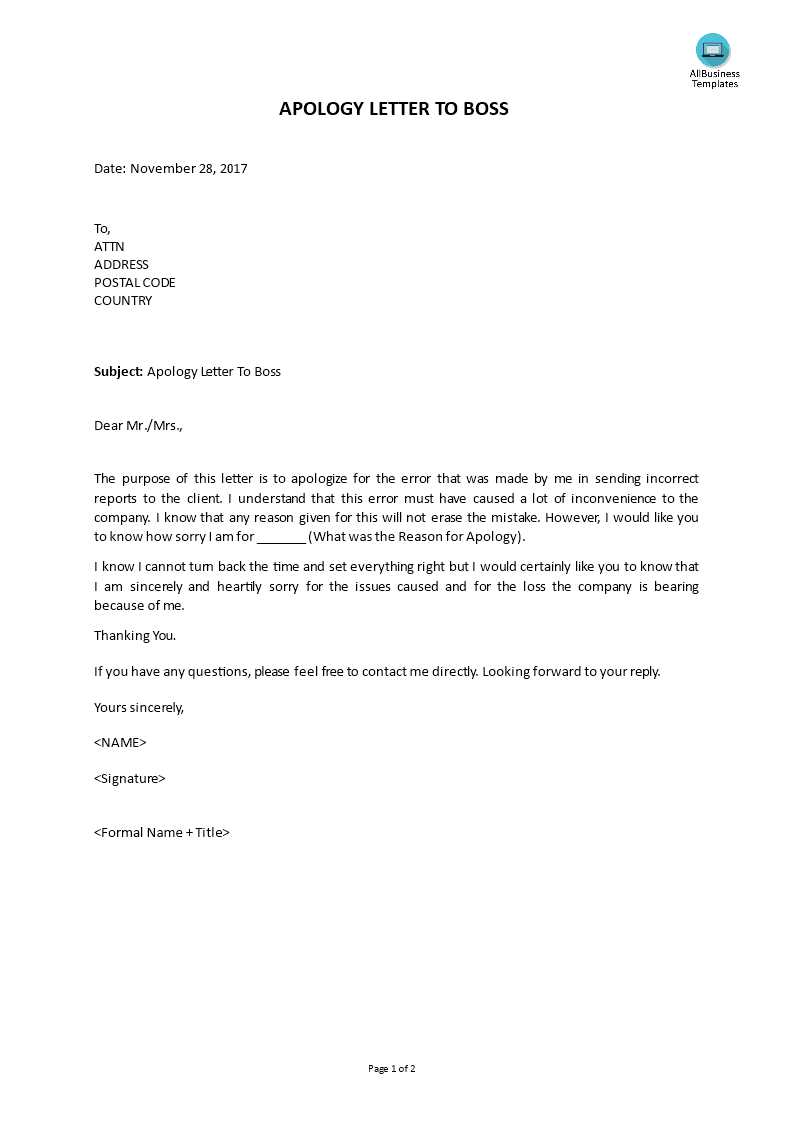Funny apology letter template

If you’ve messed up and need to apologize, but want to keep the tone light, this funny apology letter template can help you strike the right balance between sincerity and humor. A well-crafted apology doesn’t have to be overly serious–injecting a little humor can soften the blow while showing that you are genuinely sorry. Just make sure your humor is appropriate for the situation and the person you’re addressing.
Start by acknowledging what went wrong and showing that you understand the impact of your actions. Then, add a dash of humor to lighten the mood and show that you’re taking responsibility without taking yourself too seriously. Here’s a simple structure to follow:
1. Acknowledge the mistake: Briefly describe what you did wrong. Be honest but avoid sounding like you’re making excuses.
2. Offer a light-hearted apology: Use a humorous or playful tone to express regret. This can show your personality and make the apology feel more personal.
3. Suggest a way to make things right: Show that you’re willing to make amends, even if it’s with something small like buying a coffee or taking on a task.
Example: “I know I completely ruined your favorite mug by knocking it off the counter, but I promise I’m a work in progress. To make up for it, I’m treating you to a new mug and a coffee! Consider it a ‘mug-nificent’ apology!”
Funny Apology Letter Template

Begin with an honest, lighthearted statement about the situation. Acknowledge the mistake, but add a humorous twist to soften the tone.
Example:
“Dear [Name],
I’m writing to express my deepest apologies for [what you did]. I can’t believe I [describe the action], and I truly regret any inconvenience it may have caused. I’ve reviewed my actions, and it’s clear that I was thinking with my [sense of humor, mischievousness, etc.] rather than my brain. It won’t happen again… at least not until next time I forget where I put my keys.”
Now, express your sincere regret but in a playful way. Humor is a great way to balance sincerity with a light mood.
Example:
“I genuinely didn’t mean to [specific action]. But let’s face it, if there’s one thing I’m great at, it’s making a mess of things. If I could take back that moment and replace it with something smarter, I would have shown up at your door with pizza and a puppy. I can’t promise puppies, but pizza might be coming your way!”
Wrap up the letter by making a light-hearted offer to make things right, perhaps with something both of you would enjoy.
Example:
“To make up for my blunder, I would love to [suggest a fun activity or a treat], and I promise to [another funny promise]. You know I always deliver on weird ideas, even if they don’t always make sense!”
| Section | Example |
|---|---|
| Opening | “I’m writing to express my deepest apologies…” |
| Humorous Reflection | “I reviewed my actions, and it’s clear I was thinking with my [sense of humor].” |
| Offer to Make Amends | “I would love to [suggest activity], and I promise to [funny promise].” |
Finish with a note of gratitude and a casual sign-off that matches your tone.
Example:
“Thanks for your understanding (and patience with my antics). Looking forward to a time when I don’t embarrass myself again… but no promises!”
Sincerely,
[Your Name]
How to Start with a Lighthearted Tone
Kick off your apology letter with a playful or humorous opening that sets a relaxed mood. Avoid heavy or overly formal language–your goal is to make the reader smile, not feel burdened. A well-chosen opening can make the whole letter feel less tense and more genuine.
Use Self-Deprecation (in Moderation)
Start with a light joke that pokes fun at yourself. It’s important to keep it balanced–too much self-mockery might make you seem insincere, but a little humor can show that you’re comfortable owning your mistake. For example:
- “I think I just set a new record for the most creative ways to mess up.”
- “Well, I certainly have mastered the art of making things awkward, haven’t I?”
Be Casual, But Not Irreverent
Avoid coming across as dismissive or flippant. Humor should disarm the tension, not undermine the gravity of your apology. Keep the tone light without crossing into sarcasm. You might say:
- “I owe you one–probably more than one, after that fiasco!”
- “Let’s just say I’ve learned my lesson… the hard way.”
Adding Humor While Addressing the Issue
Humor helps soften the tone of an apology, making the message more approachable. However, keep the focus on the problem at hand while making the situation lighter. Instead of joking about the issue, aim for self-deprecating humor or playful exaggeration to show you’re taking responsibility without being overly serious.
Keep It Light but Genuine
Avoid sarcasm or humor that could be misinterpreted. Make sure the humor reflects your genuine regret, not an attempt to dodge accountability. A light-hearted comment about how the mistake wasn’t as bad as it seemed can break the tension without deflecting from the issue itself.
Find the Right Balance
Don’t overdo it. Humor should add charm to your message, not replace the apology. A funny twist should complement your apology, but never undermine its sincerity. Using humor thoughtfully shows that you understand the situation, and you can laugh at yourself without taking the matter lightly.
Creative Phrases for Apologizing in a Fun Way
Spice up your apology with these playful and light-hearted phrases that can turn a simple “I’m sorry” into something memorable. Use humor to ease tension and show that you truly care while keeping things fun.
1. “I’m Sorry… I Promise to Be Less of a Disaster Next Time”

Sometimes acknowledging your mess-ups in a playful way helps lighten the mood. This phrase shows you’re aware of your actions but can laugh at yourself while making it clear you’re working on improving.
2. “Oops, I Did It Again – But I’m Truly Sorry!”
If you’ve made the same mistake more than once, this phrase brings in a bit of humor while making it clear you regret the action. Reference a classic like Britney Spears to add a touch of nostalgia and relatability.
Don’t be afraid to get a little quirky or reference a favorite show or pop culture moment. A lighthearted apology can make the situation feel less serious and help smooth over misunderstandings in a fun, friendly way.
How to Express Regret with Humor
Use self-deprecating humor to soften the apology. Making fun of your own mistakes shows that you’re not taking yourself too seriously. A simple “I’m so sorry, I think I broke the space-time continuum with my mistake” can turn an awkward situation into a light-hearted one. Keep it relatable and fun without minimizing the issue at hand.
Balance the Tone
Find the right balance between humor and sincerity. Joking too much can undermine the apology, while being too serious can kill the humor. Aim for a tone that shows you’re genuinely sorry, but also acknowledge the absurdity of the situation. A well-timed joke can be disarming and make your apology feel more genuine.
Be Creative, But Don’t Overdo It
Creativity can go a long way in an apology. Think of a funny analogy or scenario that exaggerates the situation, like “I’ve made a bigger mess than a toddler with a paint set.” However, avoid overloading the message with jokes. A few well-chosen lines can work wonders, but a joke every other sentence can make it feel forced.
When to Use Humor in Apology Letters
Humor works best in apology letters when the mistake is minor and the relationship is friendly. It lightens the mood and shows that you can laugh at yourself, but only if the recipient shares a similar sense of humor. If the issue was serious, humor can come off as insincere, so it’s important to gauge the situation carefully. If the apology is for something small, like being late to a casual meeting, humor can help ease any tension. Avoid jokes if the apology is for a more significant issue that has caused real harm or discomfort. In those cases, sincerity should take center stage.
Consider the recipient’s personality. If they appreciate wit and sarcasm, adding a playful tone can demonstrate self-awareness and charm. However, if they value straightforwardness, it’s better to keep the tone sincere and earnest. Humor can be a great tool for breaking the ice, but it must not overshadow the core message of your apology.
Ending Your Apology Letter on a Positive Note
Wrap up your apology with a light-hearted touch to leave a good impression. Acknowledge the positive aspects of your relationship or the future, making it clear you’re looking forward to moving past the situation. For example, you could write something like: “I’m excited for the chance to make things right and continue making great memories together.” This shows you’re taking responsibility while focusing on what lies ahead.
Keep it friendly but sincere, expressing optimism. A closing such as “Thanks for your patience and understanding; I’m looking forward to better days.” reinforces that you’re committed to growth and better interactions in the future.
By ending on an encouraging note, you leave the door open for reconciliation, letting the person know you value their presence in your life. It balances the gravity of the apology with a hopeful outlook, making the process of repairing the relationship easier for both sides.